20 Steps to Buying Recreational Land

I have been buying recreational land for over 50+ years. Through the years I have developed my own 20 Step System on how to buy recreational land. The following is a short version of my system.
STEP 1 - GUTS AND MOTIVATION
I have talked to many people who have told me about a property they had looked at, but postponed buying it. While they were thinking about it, someone else who had done their research and had the guts, bought the property.
STEP 2 - FINDING PROPERTIES
Having more properties to choose from will better the odds of finding your dream or investment property at the right price. When looking for a property, use Realtors, the Internet, Newspapers, Magazines, Word of mouth, and "For Sale" signs.
STEP 3 - RECEIVING INFORMATION
Sort out the properties by priority as they are received. Organize the interesting properties into a numbered priority system by area, price and size. Have a diary or notebook and enter in the basic information.
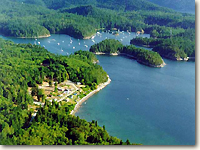
STEP 4 -ORGANIZING INFORMATION
After you have decided what properties you are interested in, organize the remaining in file folders by property in hard copy, and label them by the person who sent you the information. Also, determine any missing information and phone your contact.
STEP 5 - TITLE SEARCH
If you are dealing with a private individual, it is advisable to do a title search. Make sure you receive the full and correct legal description on each property. Then order a title search through B.C. Online, contact a title search company or have your notary or lawyer do it for you.
STEP 6- MAPS AND AIR PHOTOS
You need the following pieces of information to get a feeling for the area and even a gut feeling price.
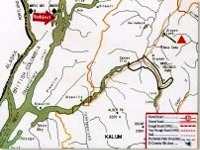
Pre emption map- This is the most important map. It gives you the big picture - crown vs. private land, roads, railroads, power lines, rivers, some big creeks, mountains, towns and much more. If necessary you could find a property using only this map. These maps are sold in some bookstores.
Forestry recreational map The forest recreational map is the most recent map of the road systems and lakes, and good camping spots on forest roads and lakes. These maps are available at the local Forestry offices.
Contour map- This map shows you if the property is very hilly, steep or swampy and any access trails. These are Federal maps and sold by the Federal Government.
Vegetation Map- Formerly known as a Forest Cover Map, this map shows the forest species, age and height classes, crown closure codes, and the site index. It will also show types of terrain. These maps are available through Clover Point Cartography.
Plan-Go directly to the registry office or through a title agency and order the plan number of the property. This will give you the sizes and the measurements of the property and where the roads are.
Survey notes- While the surveyor was setting up the original corner posts to the property, he would make notes in his journal describing the trees with identifying blazes and other distinguishing features of the property. You can request these notes from the Surveyor General's office. Using these you can determine where the cornerstones of the property were originally set, and re-walk the property lines.
Agricultural land reserve map- Phone for a copy to determine if all or part of the property is in the agricultural land reserve. This will have a big bearing of what you can do with the property.
STEP 7- INITIAL PRICE
Put a map up on your wall and mark in pencil the properties for sale. Write in the owner's name, asking price, and size. You will soon start seeing a pattern. This will give you a very general feeling for a rough price.

STEP 8- OFFERS & NEGOTIATING
I never worry about an asking price. I find that if you do your research and prove your price is better than his, you can reason with him. However, you don't want to drive out to the property and find it sold. Take the best properties and put an offer on them subject to viewing. Most importantly, learn how to negotiate, or have somebody else do the negotiating for you.
STEP 9- FIELD INSPECTION EQUIPMENT
Make sure you do not forget anything. Also, the better transportation that you get, the faster you get to look at deals.
STEP 10- FINDING THE PROPERTY
Use the speedometer in your car with the pre-emption and recreational forestry maps. Closer to the property, use the forest cover and the contour maps. If you have any problems finding the property go to the local store or gas station and ask them for help. When you get to the property, look for new posts or new identification markers. If there are none, that means that you must use the old surveys.
STEP 11- GROUND (FIELD) CHECK
When going out to look at properties, make sure you let somebody know where you are going, how long you will be, and leave them a map. Always record your mileage and direction for future use and take pictures of the property when you are walking it.
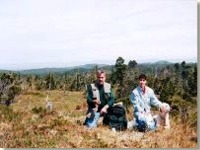
Make sure you know the acreage and measurements of the your property. Once you have found what you think is a corner post, put your hip chain onto it, look at your map and find the measurement and direction that you have to go. Walk in that direction stopping where the post is supposed to be, and walking around the entire property by with the hip chain looking for one of the 4 corner posts or bearing trees. Once you have established one of these posts the rest is easy.
STEP 12- PRICES RECENT AND SIMILAR
Once you have got all the above information, you have to determine what the price of the property is. Use what is being paid most recently for similar properties as guidelines.
STEP 13- CLOSING
After viewing the property and checking, determine if this is the property you want and if you feel the price is right. Then close it or renegotiate the deal.
STEP 14- CONVEYANCING
Stay on top of the conveyancing. Make sure you phone either the notary public or the lawyer to make sure that the sale is proceeding according to plan.
STEP 15- PACKAGING
If you do not have the cash to complete a property purchase and must arrange financing before removing the subject clause, take all your existing information you have gathered and assemble it in a detailed brochure.
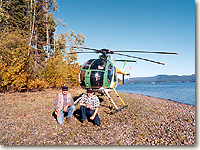 STEP 16- FINANCING
STEP 16- FINANCING
There is no deal that cannot be financed as long as the price is below market value. Financing options include cash, vendor takes back, financial institutions mortgage brokers, sawmills (if you have a stand of timber on your property), partners or syndications, limited partnerships, flipping the property, or a combination of all of the above.
STEP 17- DATA COMPLETION
Now if you have some time you can order air photos, original survey notes, if the property has timber, order an air photo interpretation and a timber cruise, and if in doubt of value, an appraisal.
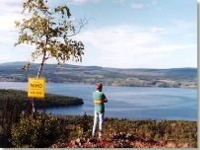 STEP 18- POSSESSION
STEP 18- POSSESSION
Make your mark on your property once you own it. Put a boundary around it with ribbons so nobody abuses it.
STEP 19- STORING DATA
One of the most important steps even though it is the last one is to file and save information on all properties.
STEP 20- IMPROVING THE PROPERTY
There are numerous things you can do to increase the value of a property. You can clear underbrush, roads, selective logging, fix up the access roads, make a pond or a building site, renovate, or build a cabin.
Telephone: 604-606-7900 | Email: [email protected]
Copyright © 2012 Niho Land & Cattle Company. All rights reserved. | Privacy Policy | Terms of Use | Webmaster